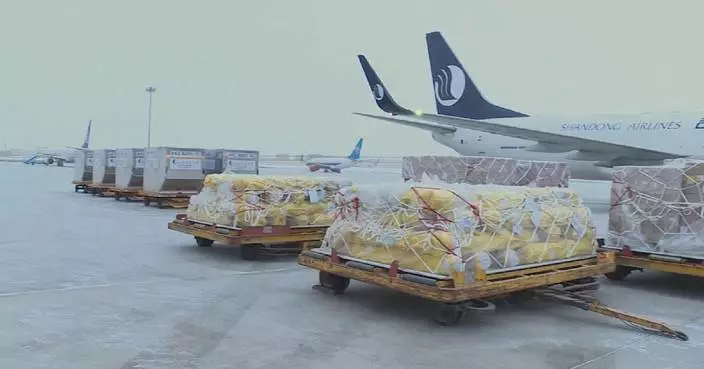Chinese customs authorities announced 16 measures on Thursday to further optimize the business environment at ports and facilitate customs clearance for enterprises.
While helping foster new drivers of foreign trade, the measures also focus on leveraging the existing strengths and volume of traditional foreign trade, according to the General Administration of Customs (GAC).
In terms of imports, efforts will be made to safeguard the import of energy and mineral products as well as agricultural and food products, according to the GAC.
Regarding exports, the administration will continue to facilitate the export of automobiles and support the export of locally distinctive agricultural and food products. As these products are among the top players in China's foreign trade, it is crucial in stabilizing the foreign trade fundamentals, the GAC said.
"Traditional stock in foreign trade includes high-quality agricultural products, the advantageous electronic products, and consumer goods that people use. These are our traditional strengths in export products, which is also the existing stock in foreign trade. Innovative methods will be used to support the export in these traditional industries, which will improve the existing stock in foreign trade," said Lin Shaobin, deputy director of the Department of General Operation of the General Administration of Customs.
Currently, more than 630,000 companies in China are involved in import and export activities, serving as the driving force behind the country's efforts to expand its presence in international markets, said the administration.
The latest measures will support these enterprises in expanding their international markets. For example, in supporting the export of advantageous products, efforts will be made to enhance technical trade consultation services and assist companies in dealing with unreasonable foreign trade restriction measures.

China unveils new measures to further facilitate foreign trade
A contemporary Chinese art exhibition has been held at the Hungarian National Museum in Budapest, playing a vibrant role in fostering cultural ties between the East and the West. The exhibits, including brush paintings and sculptures on mountains, rivers, plants, blend traditional brushwork with Western influences, creating a serene, meditative atmosphere.
The artists' deep connection with the natural world is a window that the "Chinese Xieyi exhibition'' at the Hungarian National Museum presents to the public to explore Chinese philosophy, according to Tunde FegyvAri-Komori, curator of the Hungarian National Museum.
"This exhibition is a collection of 58 artworks, including four sculptures from 58 different artists, from the National Art Museum of China's collection. And they represent modern and contemporary artworks, partly reflecting back to the traditional Chinese painting and Chinese art, and partly reflecting to Western influences in art, which mostly started arriving in China after the 1970s and the 80s," said FegyvAri-Komori.
Much of the exhibition showcases traditional Chinese brushwork, where delicate strokes create intricate designs and meanings that express deep philosophical meanings, allowing viewers to experience the world from their perspective.
"The Chinese curators constructed the exhibition around these three topics and these three main aspects to approach Xieyi itself. The first one is called 'yi', which translates as meaning. This focuses on the essence of the topic. The second one is form, which in Chinese is 'xing,' and it's quite similar to meaning, but from a different approach. They are focusing on the form itself that they see, but they are not aiming at mirroring reality. The third one is called 'interest,' or in Chinese called 'qu.' And in this last part, I would say that it's a combination of the first two," said FegyvAri-Komori.
One standout piece is a sculpture that blends mythology and modern art, depicting Lao Tzu departing from the Qin Empire (221 BC to 207 BC), carrying the wisdom that shaped Taoist thought with him. The ox-head panther he rides symbolizes mysticism and the spiritual journey, adding another mythical dimension to the work.
"It expresses Xieyi very well, but at the same time, it also expresses a little bit of Western modern art, abstract art," said FegyvAri-Komori.
For many visitors, the exhibition is a chance to experience the dynamic evolution of Chinese art.
"My father had several books about Chinese art, about porcelains, ceramics, and paintings. It always struck me how different it is from our European tradition. There's a subtlety and sensitivity in it. The way they express emotions feels so unique and profound," said Daniel, a visitor.
The exhibition, part of celebrations of the 75th anniversary of the establishment of diplomatic relations between Hungary and China, celebrates cultural exchange and shared appreciation for art and culture.

Contemporary Chinese art expo held in Hungary helps cultivate ties between east and west










